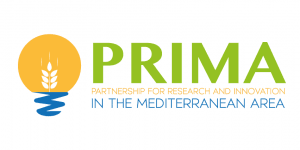
The University of Bologna takes part into a number of international networks and associations and actively participates in several initiatives connected with Horizon 2020, According to the latest ranking by Censis, the Alma Mater ranks first among Italian universities with more than 40,000 students for the tenth consecutive year. At UNIBO, research activities are promoted, coordinated and supported by the 33 Scientific Departments. This project will be hosted by the Department of Chemistry “Giacomo Ciamician” (DC) which, since 2013, has firmly held its position as the best chemistry department in Italy. The group deals with the development and application of cell-based assays for in-vitro evaluation of nutraceuticals and food products properties, in particular (1) specific activities carried out by nutraceuticals, by monitoring the state of activation of target cellular pathways and (2) safety of food matrices through specific cytotoxicity tests. The group deals with the development of rapid and ultrasensitive bioanalytical methods, even in portable formats, for the sensitive quantitative detection of target analytes in complex matrices in a variety of research projects: NATO (2016-2019), Agenzia Spaziale Italiana (ASI) 2009-2013-2015; PRIN 2007-2009-2010-2011.
Team members involved in the project
Elisa Michelini (female, PI) is Associate Professor in Analytical Chemistry at the DC. Her scientific activity involves the development of bioanalytical methods based on bio-chemiluminescence detection and their integration into smartphone-based devices with applications in drug screening, environmental monitoring, forensics, and diagnostics (h-index: 27, ISI WoS). Author of more than 70 papers on referred journals in the fields of Biosensors, Analytical Chemistry, Clinical Chemistry and Biotechnology, of seven invited book chapters related to bioluminescent proteins and whole-cell biosensors, five invited lectures and more than 100 oral and poster presentations in national and international congresses. Owner of two international patents on a new reporter gene luciferase and on a new portable biosensing platform for multiplexed analysis. Guest Editor for Sensors (I.F. 3,0), Special issue “Smartphone-based biosensing”.
Mara Mirasoli (female) is Associate Professor in Analytical Chemistry at the DC. Her scientific activity regards the development of chemiluminescent immunoassays and gene probe assays, for the quantitative analysis of molecules of interest in the medical, alimentary and environmental fields and the development of new portable devices for multiplexed detection based on chemiluminescence and using microfabrication technology and microfluidics. Author of more than 80 papers and book chapters on referred journals or books (h-index 25, ISI WoS).
Massimo Guardigli (male) is Associate Professor in Analytical Chemistry at the DC. His scientific activity mainly regarded the development of new luminescent probes for obtaining ultrasensitive luminescence analytical methods for the measurement of enzyme activity and their application for the screening of enzyme inhibitors (e.g., acetylcholinesterase, COX-1 and COX-2 inhibitors) and for the measurement of antioxidant activity of biological samples, and new nanomaterials based on new generation dioxetane derivative thermoluminescence probes. Coauthor of more than 80 scientific publications on international journals (h-index 35, ISI WoS).
Maria Maddalena Calabretta (female), Ph.D. in Chemistry, is Post doc at UNIBO. Her research is mainly focused on the development of ultrasensitive analytical methods applied to biomedical and pharmaceutical screening (HTS and HCS), environmental monitoring and food. Author of about 17 papers in journals with high impact factor in the fields of Analytical Chemistry (H-index:9).
Marianna Fanti (female) web technician with expertise in web sites dedicated to events. Antonia Lopreside (female) and LauraMontali (female), PhD sudents in chemistry.
Publications and/or products, services related to the project
Michelini E, Calabretta MM, Cevenini L, Lopreside A, Southworth T, Fontaine DM, Simoni P, Branchini BR, Roda A (2019) Smartphone-based multicolor bioluminescent 3D spheroid biosensors for monitoring inflammatory activity. Biosens Bioelectron.123:269-277
Lopreside A, Calabretta MM, Montali L, Ferri M, Tassoni A, Branchini BR, Southworth T, D’Elia M, Roda A, Michelini E (2019) Prêt-à-porter nanoYESα and nanoYESβ bioluminescent cell biosensors for ultrarapid and sensitive screening of endocrine-disrupting chemicals. Anal Bioanal Chem. 411(19):4937-4949.
Zangheri M, Di Nardo F, Anfossi L, Giovannoli C, Baggiani C, Roda A, Mirasoli M. (2015) A multiplex chemiluminescent biosensor for type B-fumonisins and aflatoxin B1 quantitative detection in maize flour. Analyst. 140(1):358-65.
Andronico LA, Chen L, Mirasoli M, Guardigli M, Quintavalla A, Lombardo M, Trombini C, Chiu DT, Roda A. Thermochemiluminescent semiconducting polymer dots as sensitive nanoprobes for reagentless immunoassay. Nanoscale. 2018 Aug 7;10(29):14012-14021Magliulo M, Mirasoli M, Simoni P, Lelli R, Portanti O, Roda A. (2005) Development and validation of an ultrasensitive chemiluminescent enzyme immunoassay for aflatoxin M1 in milk. J Agric Food Chem. 53(9):3300-5.
Previous projects or activities connected to the subject of this proposal
Coordinator of the international project CELL BIOSENSORS (NATO-SPS 2016-2019) ““Cell Biosensors for Detection of Chemical and Biological Threats” Partner of Ager PROJECT VIOLIN “Valorization of Italian olive oil products through innovative analytical tools” (2016) Partner of BIORICE (UNIBO Coordinator Annalisa Tassoni) – 2014 EU FP7 Capacities: “BIOtechnology for the recovery of valuable peptides from industrial RICE by-products and production of added value ingredients for nutraceuticals, functional foods and cosmetics (BIORICE)”. Coordinator of PRIN 2015 “Securing and ensuring sustainable use of agriculture waste, co- and by-products: an integrated analytical approach combining mass spectrometry with health effect-based biosensing”. Partner of – 2016 Bando Regione Emilia Romagna Por Fesr per progetti di ricerca industriale strategica rivolti agli ambiti prioritari della Strategia di Specializzazione Intelligente: “Valorizzazione sostenibile degli scarti della filiera vitivinicola per l’industria chimica e salutistica (VALSOVIT)”.
Description of infrastructure and/or technical equipment relevant to the proposal work
The Laboratory of Analytical and Bioanalytical Chemistry is equipped with all the instrumentation necessary for photophysical and luminescence measurements (spectrofluorometers, microtiter-based luminometers, thermoelectric cooled CCD cameras for portable instrumentation), cell culture, molecular biology techniques and for testing biological activity and toxicity. The laboratory also includes a section of separative techniques with HPLC/ESI/MS instruments for the characterisation of food matrices and quantification of bioactive molecules. The full list of available equipment and instrumentation visit http://www.chimica.unibo.it/it

